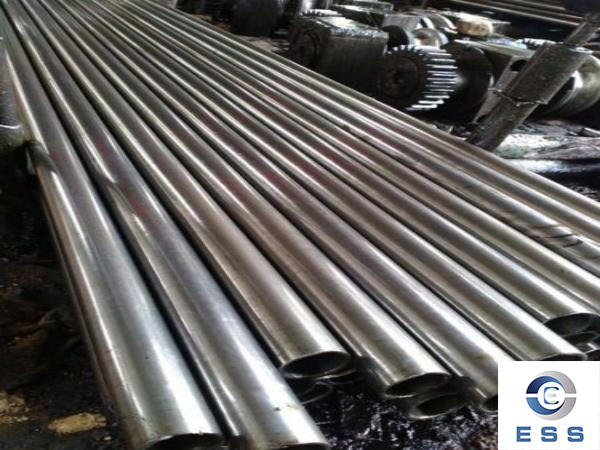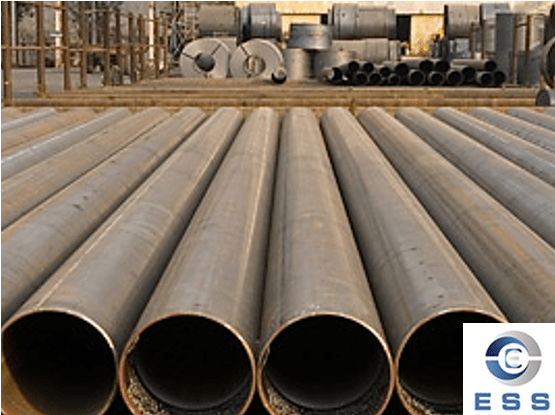Application of hydraulic tubes in the field of machinery

Basic structure and classification of hydraulic tubes
Hydraulic tubes are a kind of pipeline that pushes liquid through pressure to achieve mechanical movement. They are mainly composed of inner pipe layer, reinforcement layer and outer protective layer. The inner pipe layer is the liquid passage of the hydraulic tube, usually made of metal, plastic and rubber. The reinforcement layer is used to enhance the pressure resistance of the hydraulic pipe, usually steel wire or steel cord. The outer protective layer is used to prevent external factors from damaging the hydraulic tube, usually made of plastic or rubber. According to different materials and uses, hydraulic tubes can be divided into seamless steel pipes, steel wire reinforced rubber pipes, galvanized steel pipes, synthetic rubber pipes, polyester elastomer pipes, etc.
Application of hydraulic tubes
1. Construction machinery
Hydraulic tubes are widely used in equipment such as concrete pump trucks, delivery pumps, mixer trucks, cranes, loaders and excavators. In these equipment, hydraulic tubes are mainly used to transmit pressure and hydraulic oil, play the role of operating devices, and improve the working efficiency and accuracy of construction machinery.
2. Metallurgical equipment and machinery
Hydraulic tubes are mainly used in steelmaking equipment, casting equipment, rolling equipment, quenching equipment, milling equipment, etc. These devices require large-capacity and high-pressure hydraulic control systems. Hydraulic tubes can withstand high pressure and high temperature, have excellent corrosion resistance and wear resistance, and can work continuously in complex environments.
3. Marine machinery
Hydraulic tubes are widely used in equipment such as steering gear, lifting equipment, and ship propellers. These equipment need to have stability and reliability. Hydraulic tubes can transfer a large amount of liquid to meet the high pressure and high torque requirements of the equipment.
4. Aerospace machinery
Hydraulic tubes are mainly used in aircraft landing gear, induction systems, elevators and other equipment. Hydraulic tubes need to have the characteristics of lightweight, high strength, high pressure and high temperature to meet the aircraft's requirements for lightweight and high efficiency of hydraulic systems.
From the above information, it can be seen that hydraulic tubes are applied to various fields using hydraulic technology, so what is hydraulic technology?
Hydraulic technology
Hydraulic technology is a technology that uses the principles of fluid mechanics to transfer energy and control. It is widely used in various fields, especially in the field of engineering machinery. The application of hydraulic technology enables engineering machinery to have powerful power and precise control capabilities, and improves the working efficiency and safety of machinery.
Hydraulic tubes are mainly used in mechanical equipment such as excavators, loaders, cranes, etc., as pipelines for transmitting hydraulic oil, air pressure and other media to achieve motion control of mechanical parts.
1. Excavator
An excavator is a heavy mechanical equipment used for earthwork and ore mining. The hydraulic system enables the excavator to perform various tasks, such as digging, grabbing, unloading, etc. For example, the movement of the hydraulic cylinder is achieved by the high-pressure oil provided by the hydraulic pump. The high-pressure oil generated by the hydraulic pump is transmitted to the hydraulic cylinder through the hydraulic pipeline, thereby driving the movement of the hydraulic cylinder. The movement of the hydraulic cylinder can realize the up and down, front and back, and left and right movement of the bucket, thereby realizing various actions of the excavator.
2. Loader
A loader is a mechanical equipment used for loading and carrying materials. The hydraulic system enables the loader to perform various tasks, such as lifting, tilting and turning. For example, the hydraulic oil pump generates high-pressure oil and transmits it to the hydraulic cylinder, thereby driving the movement of the hydraulic cylinder. The movement of the hydraulic cylinder enables the bucket of the loader to rise, fall, tilt and turn, realizing the loading and handling of materials.
3. Crane
A crane is a mechanical equipment used for lifting and carrying heavy objects. The hydraulic system enables the crane to perform various tasks, such as lifting, telescoping and rotating. For example, the hydraulic pump generates high-pressure oil and transmits it to the hydraulic cylinder, thereby driving the movement of the hydraulic cylinder. The movement of the hydraulic cylinder enables the crane's boom to rise, fall, extend and rotate, realizing the lifting and handling of heavy objects.
Hydraulic technology has also been widely used in engineering machinery such as road rollers, concrete pump trucks, and tunnel boring machines. Hydraulic technology enables these machines to have powerful power and precise control capabilities, improving construction efficiency and quality.
Hydraulic technology is widely used in engineering machinery. The hydraulic system enables engineering machinery to have powerful power and precise control capabilities, improving the working efficiency and safety of the machinery. The continuous development of hydraulic technology will bring more possibilities for the future development of engineering machinery.
The basic working principle of hydraulic tubes
The basic working principle of hydraulic tubes is based on the Pascal principle, that is, the pressure applied in a closed container will be evenly transmitted to every part of this container. Therefore, by pressurizing the hydraulic oil through the hydraulic pump, the piston is pushed forward, and the motion control of the mechanical equipment is finally achieved. Therefore, the main function of the hydraulic pipe is to transmit force, motion and energy to control the normal operation of the hydraulic equipment.
Hydraulic tubes maintenance and care methods
1. Correct installation: When installing the hydraulic tubes, choose the appropriate pipe material and pipe diameter to ensure that the tubing has sufficient strength and durability. At the same time, apply an appropriate amount of lubricating oil to the pipe joint to reduce friction and wear. Avoid twisting and bending of the hydraulic tubes during installation to avoid affecting its service life.
2. Regular inspection: It is very important to check the use of the hydraulic tubes regularly. The inspection content includes whether there are cracks, deformations, etc. on the surface of the hydraulic tubes, whether the pipe joint is loose, leaking oil, and whether the hydraulic tubes is worn or corroded. If a problem is found, it should be handled in time to avoid the expansion of the fault.
3. Regular replacement: The service life of the hydraulic tube is limited, so it needs to be replaced regularly according to the actual situation. The replacement cycle should be evaluated based on factors such as the material, use environment, and working conditions of the hydraulic tubes. When replacing hydraulic tubes, ensure the compatibility of new hydraulic tubes with the system and avoid using expired or unreliable hydraulic tubes.
4. Correct storage: When hydraulic tubes are not in use, they should be properly stored and kept. Hydraulic tubes should be placed in a dry and ventilated environment to avoid moisture and corrosion. At the same time, hydraulic tubes should be stored on a flat ground to avoid deformation due to external pressure.
5. Cleaning and maintenance: Hydraulic tubes are affected by various external factors during use, such as friction, wear, corrosion, etc., so they need to be cleaned and maintained regularly. Cleaning and maintenance can include cleaning dirt and impurities inside and outside the hydraulic tubes, as well as lubricating pipe joints and connections. This can extend the service life of hydraulic tubes and improve the operating efficiency of the system.
Summary
As a kind of pipe widely used in the field of machinery, hydraulic pipes not only have the characteristics of high strength, high pressure resistance and high corrosion resistance, but also can play an irreplaceable role in construction machinery, metallurgical equipment, marine machinery and aerospace machinery; the maintenance and maintenance methods of hydraulic pipes include correct installation, regular inspection, regular replacement, correct storage and cleaning and maintenance. Through reasonable maintenance and maintenance, the service life of hydraulic pipes can be extended to ensure the stable operation of hydraulic systems and the efficient operation of machinery.













 Eastern Steel Manufacturing Co.,Ltd not only improve product production and sales services, but also provide additional value-added services. As long as you need, we can complete your specific needs together.
Eastern Steel Manufacturing Co.,Ltd not only improve product production and sales services, but also provide additional value-added services. As long as you need, we can complete your specific needs together.










